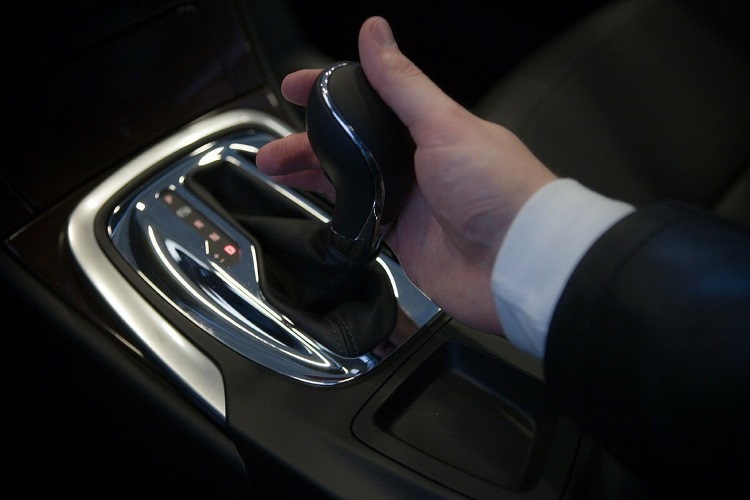
How to operate an automatic transmission
Content
An automatic gearbox (automatic transmission) is a complex mechanism that places high demands on operation, maintenance and repair. The main feature of the automatic transmission is automatic gear shifting and the presence of several driving modes, which make it easier to control the machine.
Improper maintenance of the automatic transmission, overheating of the transmission, towing the car and other factors lead to wear of the friction discs and shorten the life of the device.
What to look for when operating a car with automatic transmission
Cars with automatic transmission are designed for moderate and comfortable driving without overloading.
During operation, the following factors must be taken into account:

- Maintenance frequency. Automatic transmission requires regular maintenance and replacement of consumables. It is recommended to change the gear oil every 35-60 thousand kilometers. Untimely maintenance may require partial replacement of the friction disc blocks.
- Operating conditions. Automatic transmission simplifies driving on highways and city roads. In mud or snow, the drive wheels of the machine will slip, which will quickly lead to an overload of the automatic transmission and failure of the clutches.
- Driving technique. Automatic transmission requires more thorough engine warm-up and caution in the first minutes of the trip. Sharp acceleration and braking immediately after the start of movement lead to oil starvation of the transmission and wear of the friction discs. The advantage is the presence of redundant systems: for example, a hand (parking) brake serves as additional insurance when the “Parking” mode is turned on.
- Riding with extra load. Owners of vehicles with an automatic transmission are not recommended to drive with a trailer or tow other vehicles.
Applying additional load without sufficient ATF cooling will cause the clutch linings to burn.
Modes of operation of an automatic transmission
The standard list of automatic transmission operating modes includes:
- Drive mode (D, Drive). It is essential for moving forward. The speed and number of gears are not limited within the permissible performance limits. It is recommended to stay in this mode even if there is a short-term absence of load on the motor (for example, when braking at a red traffic light or going down a hill).
- Parking (P). Provides complete blocking of the drive wheels and transmission shaft. The use of the parking is necessary for long stops. The transfer of the selector to the P mode is allowed only after the stop of the machine. When activating the parking while driving without pressure on the pedals (“coasting”), the blocker can be damaged. If you need to stop on a section of the road with a strong slope, and not on a flat surface, then first pull the handbrake while holding the brake pedal, and only then switch to parking mode.
- Neutral mode (N). It is suitable for vehicle maintenance. For example, this mode is necessary when towing a car with an automatic transmission with an inoperative engine and checking the operation of the transmission. Switching to N mode is not required for short stops and downhill driving. It is recommended to start the engine from neutral position only when towing. If the car is in this mode on an incline, then hold the brake or put it on the handbrake.
- Reverse mode (R, Reverse). Reverse gear allows you to move in the opposite direction. The transition to reverse mode should occur after stopping. To prevent rolling when driving on an incline, depress the brake pedal before engaging R.
- Downshift mode (D1, D2, D3 or L, L2, L3, or 1, 2, 3). Locking the gears in use allows you to limit the driving speed. A feature of the mode is more active engine braking when the accelerator and brake pedals are released. Low gears are used when driving on slippery and snowy road surfaces, driving on mountain roads, towing trailers and other vehicles. If the driving speed at the moment of shifting is higher than allowed for the selected gear, then the transfer to the lower mode is not possible.
Additional modes
In addition to the main ones, the automatic transmission may have additional modes:
- S, Sport - sport mode. This function is intended for active, dynamic driving with frequent and intense overtaking. The upshift occurs with a slight delay, which allows higher engine rpm to be achieved. The main disadvantage of the S mode on the machine is high fuel consumption.
- Kick down. Kickdown involves a sharp reduction in gear by 1-2 units when you press the gas pedal ¾. This allows you to rapidly increase the engine speed and increase the speed. This function is necessary when changing lanes in heavy traffic, overtaking, etc. If you turn on the kickdown immediately after moving off, you can overload the transmission. The minimum recommended speed for maneuvering is 20 km / h.
- O / D, Overdrive. Overdrive is an overdrive for automatic transmission. It allows the use of 4th or 5th gear without blocking the torque converter, which constantly maintains low engine speeds. This ensures optimal fuel consumption at high speeds, but prevents rapid acceleration. The Overdrive function should not be used during cyclic acceleration-deceleration in traffic, towing, in difficult conditions and at speeds above 110-130 km / h.
- Snow, Winter (W) - winter mode. When the Snow function or similar is activated, the vehicle's control system redistributes the torque between the wheels in such a way as to minimize the risk of skidding. The car starts immediately from second gear, which reduces the likelihood of slipping and slipping. Shifting between gears is smooth at low engine speeds. When using the "winter" functions during the warmer months there is a high risk of overheating of the torque converter.
- E, fuel economy mode. Economy is the exact opposite of the Sport function. Transitions between gears occur without delay, and the engine does not spin up to high revs.
How to change gears on the machine
The mode change takes place after the appropriate actions of the driver - changing the position of the selector, pressing the pedals, etc. Gear shifting occurs automatically according to the selected driving function and depending on the engine speed.

However, many models of machines with an automatic transmission are equipped with a manual way of switching. It can be designated as Tiptronic, Easytronic, Steptronic, etc.
When this function is enabled, the driver can independently select the optimal gear using the "+" and "-" buttons on the lever or by gradation on the dashboard.
This feature is useful in cases where the driver's response and experience is more effective than the automatic transmission algorithms: for example, when trying to start a stalled car, driving downhill, driving on uneven roads, etc.
The mode is semi-automatic, so when high revs are reached, the automatic transmission can change gear, despite the driver's actions.
Driving technique with an automatic transmission
To safely drive a car with automatic transmission, you need to be guided by the following principles:
- warm up the car with an automatic transmission in winter, and after starting the engine, clamp the brake pedal and alternately go through all the modes to distribute oil in the automatic transmission;
- move the selector to the desired position with the brake pedal pressed;
- After moving off in position D, wait for idling, and then press the accelerator pedal;
- avoid sharp acceleration and deceleration in the first 10-15 km of the way;
- do not transfer the automatic transmission to N, P and R on the move, take a short break between driving in a straight line (D) and reverse (R);
- in a traffic jam, especially in summer, switch from D to N to prevent overheating of the automatic transmission;
- if the car stalls on ice, in mud or snow, do not try to drive it on your own, but seek help from other drivers in order to pull it out in tow in N mode;
- take in tow only in case of urgent need, but light trailers or vehicles with a lower weight;
- regularly check the oil level on a heated automatic transmission by moving the lever to neutral or parking.
Is it possible to tow a car on a machine
Towing a vehicle (TC) with a running engine or an additional oil pump is allowed without limiting the speed and duration.
If the engine is turned off due to a breakdown or for another reason, the travel speed should be no more than 40 km / h (for vehicles with 3 gears) and 50 km / h (for vehicles with 4+ gears).
The maximum towing distance is 30 km and 50 km respectively. If you need to cover a greater distance, you should use a tow truck or make a stop for 40-50 minutes every 30-40 km.
It is allowed to drag a car with automatic transmission only in a rigid hitch. Transportation is carried out in neutral mode, the ignition key must be in the ACC position.